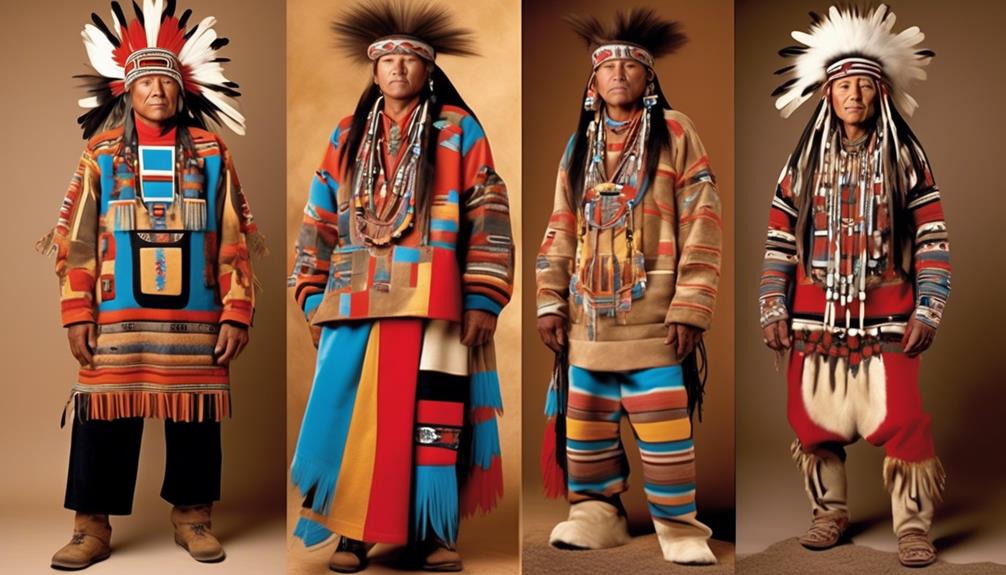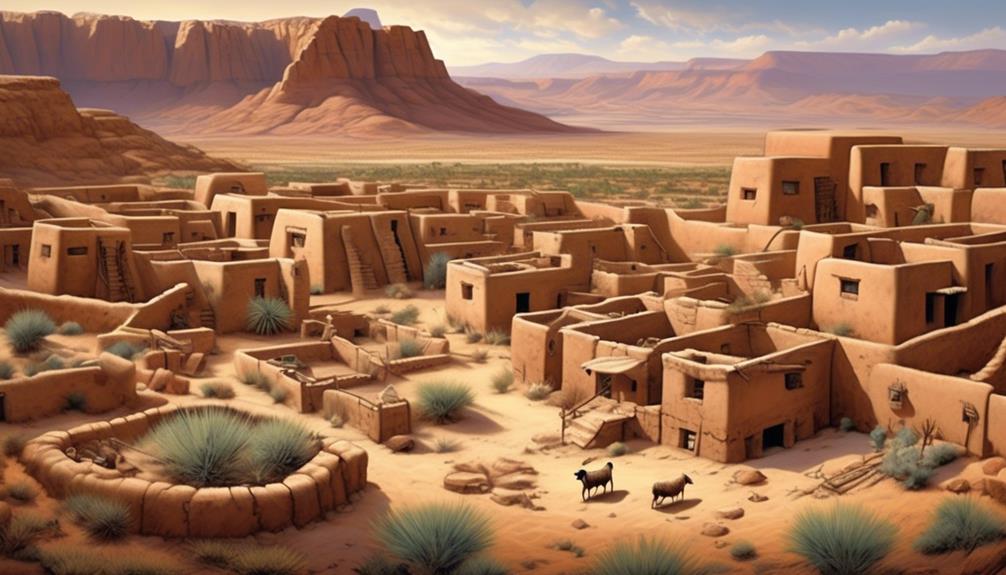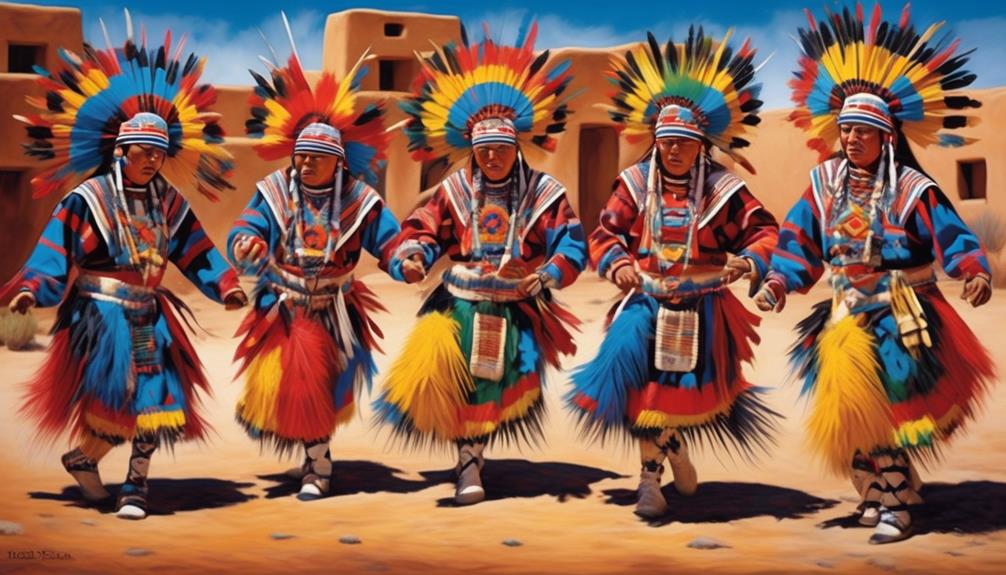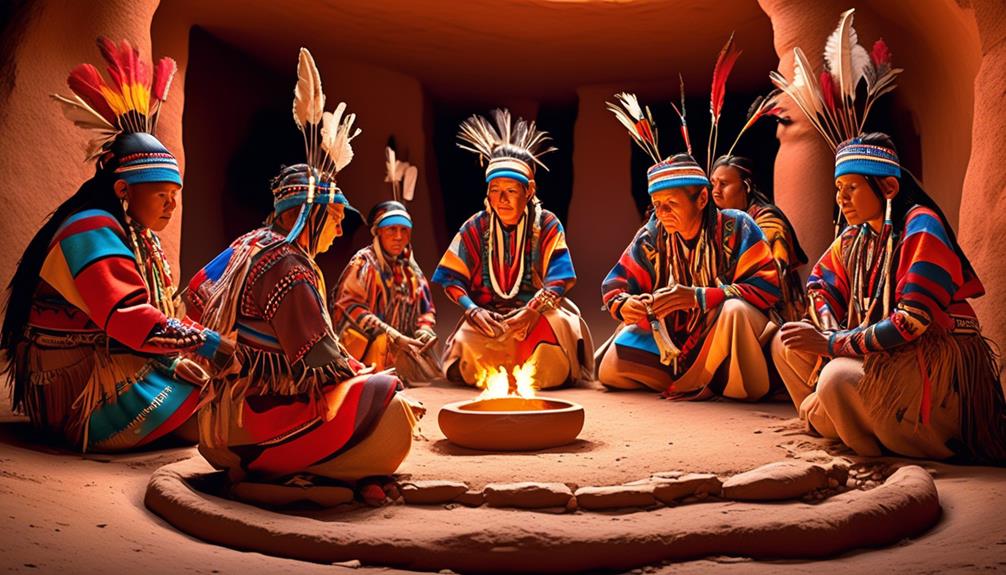As we delve into the rich culture of Native American tribes, we come to a point where we can appreciate the distinctions between the Hopi tribe and the Northern Paiute.
Their cultural landscapes are as varied as the colors of the desert at dawn, each holding unique traditions and beliefs that have shaped their identities over generations.
Exploring the geographic distribution, language and communication, cultural practices and traditions, historical origins and migration, and their relationship with the land, we uncover a rich mosaic of diversity that beckons us to unravel the distinct nuances of these two indigenous communities.
Key Takeaways
- Geographic Distribution and Historical Origins: The Hopi Tribe resides in northeastern Arizona, while the Northern Paiute predominantly live in the Great Basin region of the United States.
- Language and Communication: The Hopi Tribe speaks the Hopi language, actively preserving and teaching it to younger generations, while the Northern Paiute language is endangered, with revitalization efforts being made.
- Cultural Practices and Traditions: The Hopi Tribe's ceremonial rituals are rooted in agricultural traditions and spiritual beliefs, while the Northern Paiute are known for sweat lodge ceremonies and Sun Dance.
- Relationship With the Land: Both the Hopi Tribe and the Northern Paiute have a deep spiritual connection to the land, demonstrating profound respect for the environment and practicing responsible stewardship.
Geographic Distribution
The geographic distribution of the Hopi Tribe and the Northern Paiute differs significantly, with the Hopi mainly residing in northeastern Arizona and the Northern Paiute predominantly located in the Great Basin region of the United States. This divergence in settlement patterns has influenced their environmental adaptations and land use.
The Hopi, residing in a semi-arid environment, have historically adapted to farming on arid lands, utilizing innovative techniques such as terraced fields to conserve water. In contrast, the Northern Paiute, inhabiting the Great Basin, a region characterized by its harsh, arid climate, have traditionally been hunter-gatherers, relying on natural resources such as seeds, roots, and small game for sustenance.
The differences in natural resources and environmental conditions have led to distinct land use practices. The Hopi have a long-standing agricultural tradition, growing corn, beans, and squash in addition to raising livestock. Conversely, the Northern Paiute have a more mobile lifestyle, following seasonal patterns of resource availability and utilizing a larger territory for hunting and gathering.
Understanding these contrasting environmental adaptations and land use practices provides insight into the diverse ways indigenous communities have historically interacted with and thrived within their natural surroundings.
Language and Communication

Comparing the environmental adaptations and land use practices of the Hopi Tribe and the Northern Paiute reveals distinct influences on their respective languages and communication methods. These differences have shaped the ways in which each tribe preserves its language and overcomes communication barriers.
- Language Preservation: The Hopi Tribe has a strong emphasis on language preservation, with efforts to document and teach their native language, Hopi. This commitment stems from the belief that their language is integral to their cultural identity and spirituality.
- Communication Barriers: The Northern Paiute, due to their historically nomadic lifestyle and interaction with diverse groups, developed intricate sign language and non-verbal communication methods to overcome linguistic barriers. This adaptation allowed them to communicate with other tribes and navigate the challenges of multilingual interactions.
- Cultural Influence: The environmental factors and historical interactions have deeply influenced the linguistic and communication practices of each tribe, showcasing the intricate relationship between culture, environment, and language.
Understanding these distinct influences on language and communication methods provides valuable insights into the rich cultural tapestry of the Hopi Tribe and the Northern Paiute.
Cultural Practices and Traditions
When examining cultural practices and traditions, we observe distinct rituals and customs that have been shaped by the historical experiences and environmental influences of both the Hopi Tribe and the Northern Paiute. The ceremonial rituals of the Hopi Tribe are deeply rooted in their agricultural traditions and spiritual beliefs. The Hopi perform elaborate ceremonies such as the Niman Kachina, a ritual that marks the end of the planting season and seeks blessings for a bountiful harvest. On the other hand, the Northern Paiute are known for their unique sweat lodge ceremonies, which are central to their spiritual and healing practices. The tribe also holds the Sun Dance, a sacred ceremony that involves prayer, fasting, and dance to honor the earth and the great spirit.
| Hopi Tribe | Northern Paiute |
|---|---|
| Niman Kachina Ceremony | Sweat Lodge Ceremonies |
| Katsina Doll Carving | Basket Weaving |
| Corn Husk Doll Making | Tule Mat Weaving |
| Plaited Yucca Basketry | Beadwork |
| Traditional Pottery | Tule Duck Decoys |
Furthermore, ancestral crafts play a significant role in preserving the cultural heritage of both tribes. The Hopi Tribe is renowned for their skilled craftsmanship in creating Katsina dolls, corn husk dolls, and traditional pottery, while the Northern Paiute are known for their expertise in basket weaving, tule mat weaving, and beadwork. These practices are not only artistic expressions but also serve as a means of passing down stories, traditions, and values from one generation to another.
Historical Origins and Migration
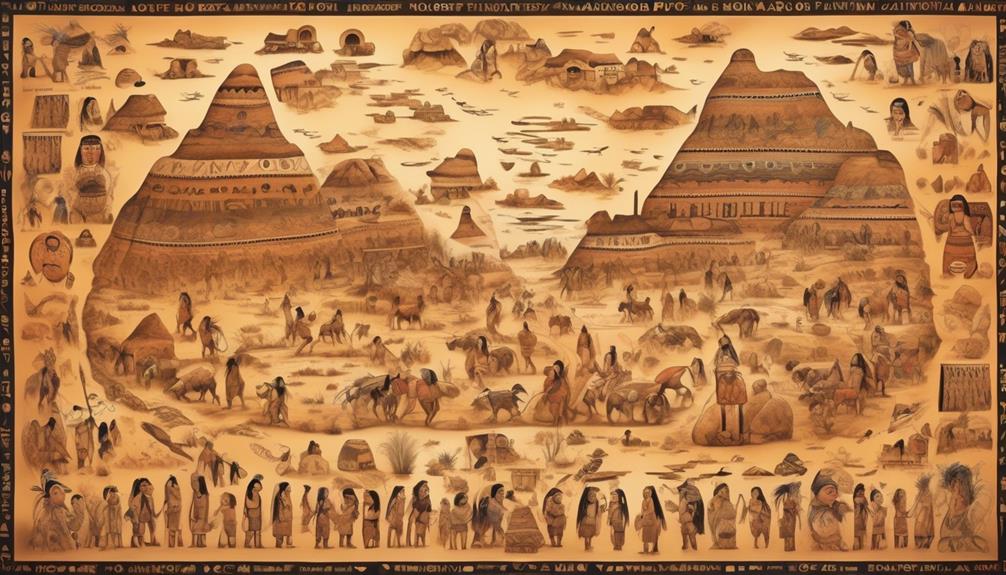
Examining the historical origins and migration patterns of both the Hopi Tribe and the Northern Paiute reveals how their cultural practices and traditions have been shaped by their ancestral journeys and the environments they encountered.
Tribal migration and settlement: The Hopi Tribe's ancestors are believed to have migrated from the north, settling in the Southwest, specifically in the area that's now known as Arizona. In contrast, the Northern Paiute's ancestors have a historical movement that traces back to the Great Basin region, encompassing parts of present-day Nevada, Oregon, Idaho, and California.
Ancestral origins and historical movement: The Hopi Tribe's ancestral origins are linked to the ancient Pueblo people, whose cultural practices and traditions significantly influenced the development of the Hopi culture. On the other hand, the Northern Paiute's historical movement is associated with a nomadic lifestyle, as they moved across the Great Basin in search of resources and sustenance.
Environmental adaptation and cultural evolution: The Hopi Tribe's settlement in the arid desert landscape of the Southwest led to the development of unique agricultural practices, such as dry farming and the use of irrigation systems. In contrast, the Northern Paiute's historical movement across the Great Basin shaped their hunting and gathering practices, as they adapted to the diverse ecosystems of the region.
Understanding the historical origins and migration patterns of these tribes provides valuable insights into the diverse cultural landscapes that have shaped their distinctive identities.
Relationship With the Land
In understanding the Hopi Tribe and the Northern Paiute, one can observe their distinct and profound connection to the land, which has played a vital role in shaping their cultural identities.
The Hopi Tribe, located in the arid highlands of northeastern Arizona, has a deep spiritual connection to the land. Their traditional agriculture, centered around dry farming techniques, is intricately linked with their spiritual beliefs, emphasizing the importance of sustainability and harmony with nature. The Hopi people view the land as a living entity, with each element holding spiritual significance.
In contrast, the Northern Paiute, residing in the Great Basin region, also maintain a strong bond with the land. Their traditional agriculture is adapted to the harsh desert environment, utilizing methods like irrigation to cultivate crops. The Northern Paiute's spiritual connection to the land is evident in their reverence for natural resources and their belief in responsible stewardship.
Both tribes demonstrate a profound respect for the land, integrating traditional agricultural practices and spiritual beliefs to sustain their cultural identities.
Frequently Asked Questions
What Are the Differences in Traditional Dress and Ceremonial Practices Between the Hopi Tribe and the Northern Paiute?
When considering differences in traditional dress and ceremonial practices between the Hopi Tribe and the Northern Paiute, it's important to recognize the unique cultural attire and ceremonial rituals of each group.
Both tribes have distinct traditional clothing and ceremonial practices that reflect their specific cultural heritage. The differences in these aspects offer insight into the rich and diverse traditions that define the Hopi and Northern Paiute tribes.
How Do the Hopi Tribe and the Northern Paiute Differ in Their Governance and Leadership Structures?
Tribal governance and leadership structures vary significantly between the Hopi Tribe and the Northern Paiute.
The Hopi Tribe has a matrilineal clan system, where clan mothers play a crucial role in leadership and decision-making.
In contrast, the Northern Paiute traditionally have a more decentralized leadership structure, with leadership roles distributed among different community members.
These differences in social organization and community roles reflect the distinct cultural and historical backgrounds of each tribe.
What Are the Main Differences in Religious Beliefs and Spiritual Practices Between the Hopi Tribe and the Northern Paiute?
In our research, the main differences in religious beliefs and spiritual practices between the Hopi Tribe and the Northern Paiute are evident in their community gatherings and storytelling.
The Hopi Tribe emphasizes ceremonial dances and sacred symbols as integral parts of their spiritual practices, while the Northern Paiute place emphasis on different rituals and symbols.
These differences reflect the unique cultural and spiritual traditions that have been passed down through generations within each tribe.
How Do the Hopi Tribe and the Northern Paiute Differ in Their Traditional Foods and Agricultural Practices?
In discussing traditional cuisine, the Hopi Tribe and the Northern Paiute differ in their farming techniques.
The Hopi Tribe traditionally farms on terraced fields and relies heavily on corn, beans, and squash.
In contrast, the Northern Paiute traditionally practiced a more nomadic lifestyle and gathered wild plants and hunted small game.
These differences in agricultural practices reflect the unique environmental and cultural contexts of each tribe.
What Are the Distinct Artistic and Craft Traditions of the Hopi Tribe and the Northern Paiute?
When it comes to artistic traditions and craft techniques, both the Hopi Tribe and the Northern Paiute have unique and rich cultural expressions.
The Hopi Tribe is known for their intricate pottery, katsina dolls, and vibrant ceremonial clothing, reflecting their deep spiritual connections.
In contrast, the Northern Paiute are renowned for their exquisite basket weaving, beadwork, and traditional regalia, which are integral to their ceremonial practices and storytelling.
Conclusion
In conclusion, the Hopi Tribe and the Northern Paiute are distinct in their geographic distribution, language, cultural practices, historical origins, and relationship with the land.
While the Hopi Tribe resides in the Southwest, the Northern Paiute are located in the Great Basin region.
Despite their differences, both tribes share a deep connection to their land, much like two unique flowers thriving in their own respective environments, each with its own beauty and significance.
